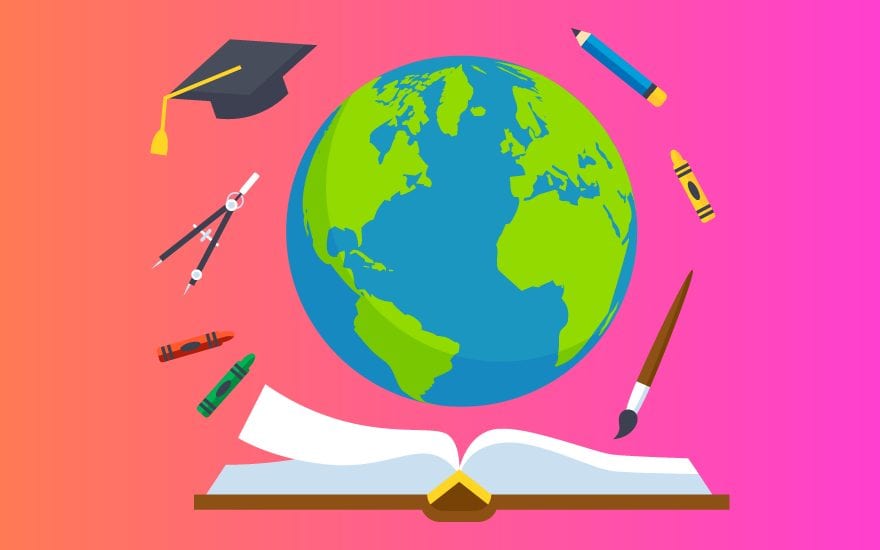There are a number of ways to rank countries in terms of education. One common method is to compare the results of international standardized tests, such as the Programme for International Student Assessment (PISA) or the Trends in International Mathematics and Science Study (TIMSS). Another approach is to look at educational attainment levels, such as the percentage of people with a high school diploma or tertiary degree.
In general, countries that score well on international tests and have high levels of educational attainment tend to be wealthier nations. However, there are some notable exceptions. For example, China often outperforms developed countries on international tests despite having a much lower per capita income.
And while many African nations rank near the bottom of global education rankings, there are a few bright spots, such as Rwanda which has made significant progress in recent years.
There are a lot of different ways to measure the quality of a country’s education system. Some people look at test scores, others look at graduation rates. But one of the most important factors in determining the quality of a country’s education is how much money it spends on its students.
That’s why the latest education rankings from the Organisation for Economic Co-operation and Development (OECD) are so interesting. The OECD looked at how much money countries spend on their primary and secondary school students, and then ranked them based on that data.
The United States comes in at number 28 on the list, spending an average of $9,313 per student each year.
That might sound like a lot, but it’s actually less than many other developed countries. For example, France spends $12,744 per student and Germany spends $11,693. Even some developing countries spend more than the US does: Brazil spends $9,370 per student and China spends $8,691.
So what does this all mean? It means that the US is falling behind when it comes to investing in its students’ futures. If we want our children to compete in a global economy, we need to start investing more in their education.
Education Rankings by Country
What Country is #1 in Education?
There is no definitive answer to this question as different metrics can produce different results. However, based on various measures, it is generally agreed that Finland is often considered to be the leading country in education. For example, the Organization for Economic Cooperation and Development’s (OECD) Program for International Student Assessment (PISA) ranks Finland as the number one education system in the world.
The PISA test assesses 15-year-olds in reading, mathematics, and science and is used as a measure of educational performance across countries. In addition, the OECD’s Better Life Index also ranks Finland as having the best education system in the world. On this index, which looks at various factors such as access to quality education, educational attainment levels, and literacy rates, Finland consistently scores highly.
Other countries that are often cited as having leading education systems include Singapore, Japan, South Korea, and China. All of these countries typically rank highly on international measures of educational performance such as PISA or the Programme for International Student Assessment.
What Country Ranks the Highest in Education?
The United States ranks first among developed countries in education, according to a new report from the Organization for Economic Cooperation and Development. The study, which looked at data from 2018, found that American adults aged 25-64 have an average of 16.6 years of schooling. That’s ahead of Canada (16.5), Japan (16.3), the United Kingdom (16.2), and other major economies like Germany (15.5) and France (14.9).
The rankings are based on a measure called “mean years of schooling,” which is calculated by adding up all the years of education an adult has received, including both formal schooling and any informal or on-the-job training they may have received. The U.S., with its large and diverse population, has more adults with college degrees than any other country: about 33% of Americans have at least a bachelor’s degree, compared to just under 30% in Canada and the UK, 21% in Japan, and 20% in Germany and France.
So why does the US rank so high in education?
There are a number of factors:
First, the US has more colleges and universities than any other country – over 4,700 as of 2017 – giving students more opportunities to pursue higher education if they wish to do so. Second, America’s higher education system is highly decentralized: while there are national accreditation bodies that set standards for schools across the country, each state also has its own system of governance for public colleges and universities.
This can lead to some variation in quality between schools but it also allows for greater innovation and flexibility in curriculum design; something that may be attractive to students looking for specific programs or courses not offered at traditional universities.
How Does the Us Rank in Education?
The United States is ranked number one in the world for education, according to the most recent data from the Organisation for Economic Co-operation and Development (OECD). This is based on a variety of factors, including access to early childhood education, public spending on educational institutions, pupil-teacher ratios, and graduation rates. The US has been consistently ranked as one of the top countries for education since the OECD began measuring these indicators in 2000.
There are a number of reasons why the US ranks so highly in terms of education. One key factor is that there is universal access to early childhood education in the US. This means that all children have the opportunity to receive a high-quality education from an early age, which sets them up for success later in life.
Another key factor is that public spending on educational institutions is very high in comparison to other countries. In fact, per-pupil spending on elementary and secondary schools in the US is more than double the OECD average. This results in better facilities and resources for students, which leads to better outcomes.
Finally, pupil-teacher ratios are lower in the US than average, meaning that students have more individual attention and support from their teachers. This also contributes to better learning outcomes.
Overall, it’s clear that the US rank highly when it comes to education due to a number of factors.
These include universal access to early childhood education, high levels of public spending on educational institutions, low pupil-teacher ratios and high graduation rates.
What State is Ranked 50 in Education?
Pennsylvania is ranked 50th in education, according to a new report from WalletHub. The report looked at a variety of factors, including test scores, high school graduation rates and the quality of teachers. Pennsylvania fared poorly in several key areas, including pre-kindergarten enrollment and the number of students enrolled in advanced placement courses.
The state did score well on one measure: the percentage of adults with a high school diploma or higher.

Credit: leverageedu.com
Top 10 Education Countries
There are many factors to consider when determining which countries have the best education systems. Countries must be compared on a variety of metrics, including spending on education, test scores, graduation rates, and more. Additionally, it is important to consider whether a country’s educational system is improving or declining.
With all of these factors in mind, here are 10 of the best countries for education:
1. Finland
2. Japan
3. South Korea
4. Singapore
5. Hong Kong SAR 6. Netherlands 7. Switzerland 8. Canada 9. United Kingdom 10 Denmark These are just a few examples of great places to get an education!
U.S. Education Ranking in the World
It’s no secret that the United States education system is lagging behind many other developed countries. In fact, according to the most recent data from the Organization for Economic Cooperation and Development (OECD), the U.S. ranks 38th in math and 24th in reading out of 72 countries assessed.
What’s even more troubling is that these rankings are based on data from 2015, which means that the U.S. has only fallen further behind in the intervening years.
And it’s not just primary and secondary education where we’re falling short – the U.S. also ranks 28th out of 36 countries in higher education attainment rates.
So why is the U.S. education system falling behind? There are a number of factors at play, including underfunding, inequality, and a lack of focus on STEM subjects (science, technology, engineering, and math).
However, one of the biggest problems is our country’s unwillingness to learn from other nations’ successes (and failures).
Best Education Country in the World
There are many factors to consider when determining the best education country in the world. Some of these include: access to quality education, teacher training and development, resources and facilities, student outcomes, and international rankings.
When it comes to access to quality education, Finland consistently ranks at the top.
In fact, Finnish children have some of the shortest school days and lowest homework loads in the developed world. But despite this, they consistently outperform their peers on international tests like PISA. This is thanks in part to their highly-trained teachers who are given a great deal of autonomy in how they teach their classes.
Finland also offers excellent resources and facilities for its students. Their classrooms are well-equipped with modern technology and they have ample opportunities to participate in extracurricular activities like sports and music. And because Finnish schools place an emphasis on holistic learning, students often develop strong social skills as well as academic ones.
Perhaps most importantly, Finnish students consistently score high marks on international assessments like PISA. In fact, Finland has been ranked the #1 education system in the world for several years in a row now. This is thanks to their commitment to equity – all Finnish children regardless of background have access to high-quality education that sets them up for success later in life.
Conclusion
In conclusion, the education system in each country is different and has its own advantages and disadvantages. Every country should be proud of their educational system and continue to strive to be the best they can be.

